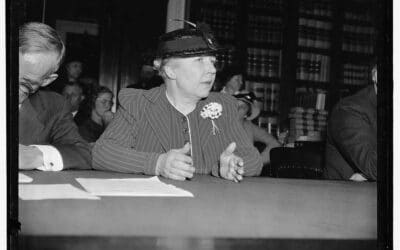How much went right with Tuesday’s midterm election? A lot. Violence at the polls, much feared, didn’t happen. Nor did widespread intimidation. For all the talk of voter suppression, poll access was healthy and uneventful in the state of Georgia and pretty much everywhere else. Nearly all candidates who’d expressed distrust in the electoral process did in fact concede in a timely way on losing their races. (On this last, Benjy Sarlin offers one plausible explanation, which is that Donald Trump simply is unlike most persons in his willingness to commit with total intensity to a storm of lies: it all helps underscore “just how much Stop The Steal was a one‐man, top‐down phenomenon in 2020.”)
Each Election Day also features news stories that get some play, but in fact fall within the normal range for things that happen this time of year. Here are four stories for which we did not need to set our hair on fire.
Humans Screwed Up
Example: owing to human error a Georgia county failed to send out 1,000 or so absentee ballots. The error was discovered, the county moved to fix things, and the voters involved were given several options to adapt. It wasn’t a plot, and things are going to be okay.
Machines Screwed Up
During every big election, equipment breaks down somewhere. This time there were ballot tabulation failures that caused delays, some serious, for voters at 70 of 223 voting centers in Maricopa County, Ariz. Happily, as in the Georgia case, modern voting methods build in backup options that included use of temporary dropboxes for ballots not being accepted by tabulators, as well as the availability of other voting centers with no wait. (Under the Arizona system, you needn’t vote at a neighborhood precinct but can go to whichever voting center you please.) Again: it wasn’t a plot, despite some efforts to portray it as such.
Someone Sued Someone
Every big election includes litigation. When it’s groundless litigation, as with an attempt to shut down Detroit mail votes, the courts’ job is to shut it down, and we (and the voters) may draw negative inferences about those who filed it. Other times the issue is closer, as with a battle in Pennsylvania in which the state’s high court split 3–3 over whether or not to count mail ballots that arrive in undated or misdated envelopes.
Most of the legally close claims tend to involve relatively few actual votes. Some coverage has portrayed the recent Pennsylvania dispute on envelope dating as resulting in the rejection of more than 2,000 ballots in Philadelphia, but according to a Washington Post account, that’s the number rejected *total*, and ballots get rejected for plenty of reasons other than envelope misdating. Moreover, mail ballots once rejected can often still be rescued (“cured”) rather than resulting in the annihilation of a vote.
The Feds Sent Monitors
The U.S. Department of Justice said Monday it was sending election monitors to 24 states, and Florida Gov. DeSantis said those monitors wouldn’t be allowed inside polling places in his state. Here the hair‐on‐fire reactions divided into opposing scorch salons, the “OMG things have gotten so bad the feds have to step in” versus “OMG Merrick Garland commits new outrage against the Constitution.”
The actual story is less exciting. Federal use of monitors regarding Voting Rights Act compliance has been going on for 50 years, and the practice has tended to decay, rather than accelerate, in the past decade. The Supreme Court’s 2013 Shelby County case much curtailed the feds’ discretion to place observers *inside* polling places in what were deemed suspect jurisdictions. DoJ remains free to send monitors for tasks that do not require polling place access, such as fielding complaints or interviewing locals, but that’s relatively ho‐hum stuff. All sides seem to agree that aside from exceptional situations as when there is a court order, the feds have no right to hang out inside polling places unless state law allows them to. So the Florida showdown wasn’t much of a showdown.
I’ve written before about how the contending “voter suppression” and “voter integrity” schools on left and right encourage an alarmist picture of an electoral system in crisis, even though by and large the system we have tends to work pretty well. Things on Tuesday were mostly normal and boring, and in the world of election administration, normal and boring are good.
This article was originally featured at the Cato Institute and is republished with permission.















